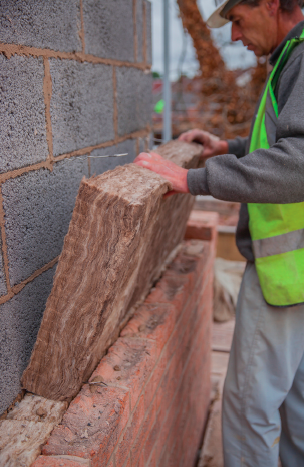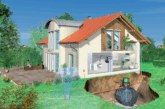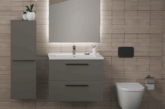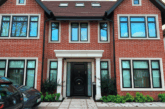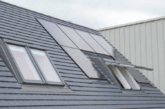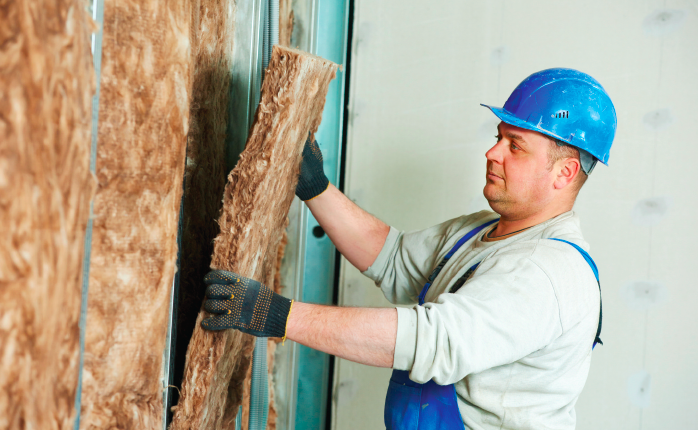
Bradley Hirst, Technical Services Manager at Knauf Insulation, explores why insulation impacts indoor air quality more than you think.
With the Future Homes Standard on the horizon and the government’s stated target of building 1.5 million homes in the next five years, housebuilders are under pressure to deliver more for less. Insulation will play a key role in the drive to lower carbon emissions and energy costs. But the right approach to insulation also has other, sometimes overlooked, benefits – including helping to improve indoor air quality (IAQ). Housebuilders that understand this can differentiate themselves not just on lower running costs and improved comfort, but on occupant health.
Occupational hazards
To appreciate insulation’s role in IAQ, it’s important to first understand some common health concerns. Sick Building Syndrome (SBS) refers to a range of nonspecific symptoms, such as headaches or fatigue, that appear to be linked to time spent in a particular building. While poor air quality can be a contributing factor, SBS can also stem from other environmental issues like dust, lighting, or excessive noise.1
In contrast, Building-Related Illness (BRI) refers to health conditions caused by identifiable factors such as exposure to volatile organic compounds (VOCs) or mould spores.2 While the causes of SBS symptoms may be ambiguous, BRI is directly linked to a building’s environment – and housebuilders can take targeted actions to reduce the risks. There are three main factors that influence IAQ: the external environment, occupant behaviour, and the building’s construction. Outdoor air pollution can infiltrate buildings, while indoor activities like cooking, smoking, or owning pets can release pollutants. For housebuilders, the third factor is the most important, and that is the design and construction of the building itself. Building performance, and the materials used to deliver it, are crucial for managing air quality, reducing the risk of SBS and tackling the causes of BRI.
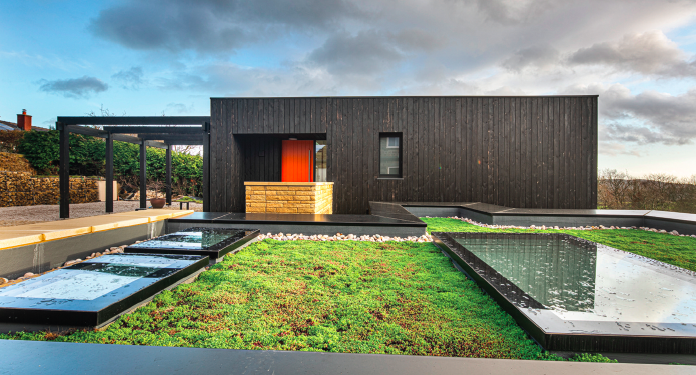 Ventilation, insulation and mould
Ventilation, insulation and mould
One of the most visible and harmful indicators of poor IAQ is black mould, which thrives in damp conditions and can cause respiratory issues or aggravate allergies. High indoor humidity and poor ventilation will cause water vapour to condense on cold surfaces such as poorly insulated walls. This provides all the required conditions for mould to flourish – which can feed off any organic material including wood, dust particles, wallpaper, cardboard, cellulose or even gypsum board.
This is where insulation becomes vital. Well-insulated walls retain heat during colder months, reducing surface condensation and the likelihood of mould. However, insulation must be installed correctly to be effective. Any air gaps or discontinuities in the thermal envelope can lead to cold spots where condensation forms more easily. A continuous, properly installed insulation layer ensures surface temperatures remain consistent and discourages moisture build-up.
Ventilation works in conjunction with insulation to reduce mould growth. Without sufficient ventilation, even the best insulation can’t prevent poor IAQ. Effective systems, whether passive (like trickle vents) or mechanical (such as extractor fans), ventilate moisture-laden air to prevent the conditions that allow mould to flourish.
Construction products and VOCs
Building performance isn’t the only way housebuilders can improve IAQ. The materials used during construction can have an impact on indoor levels of VOCs – gases emitted from common construction products that can cause a variety of acute health symptoms for building occupants.3 By using products with low VOCs, housebuilders can help to mitigate some of the potential risks of harmful chemicals.
When choosing low VOC insulation, we recommend housebuilders look for Eurofins Indoor Air Comfort Certification. Eurofins Scientific has developed a European-wide standard for testing the VOCs emitted by consumer products, including building products. There are two certifications for indoor air comfort, ‘standard’ and ‘gold’. The latter is awarded to those products that go beyond legislated standards and contain no formaldehyde or phenols.
For example, Knauf Insulation’s glass mineral wool range uses ECOSE®, their unique plant-based binder that is low- VOC and contains no added formaldehyde. As a result, these products have been awarded Eurofins Gold Certification for indoor air quality.
Healthier buildings
By combining proper ventilation, low-VOC materials, and a continuous thermal envelope, housebuilders can reduce risks like condensation, black mould, and exposure to harmful chemicals. With growing demand for healthier, more sustainable homes, those who prioritise indoor air quality will be well-positioned to meet regulatory standards and exceed customer expectations.
More information on Knauf Insulation


